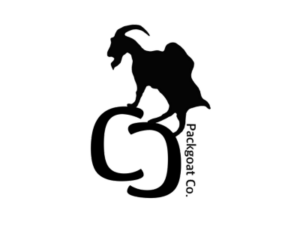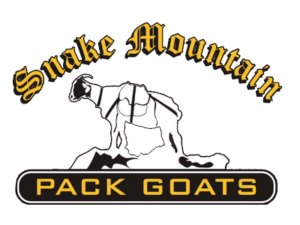Origin
The BMP document is a living document which is open to editing and updating as needed.
NAPgA created the Best Management Practices to establish responsible common sense guidelines for goatpacking. They are not intended to be overly restrictive or to discourage packgoat use in any way or in any location.
NAPgA will use best available science as a guide in which to measure and develop the BMP’s to address wildlife and other resource concerns.
BMP#1: Individually Identify Your Packgoats
Each packgoat shall have a collar with a tag attached to it containing, at a minimum, the current owner’s name and phone number.
Packgoats may be identified with a tattoo or microchip which is specific to each individual packgoat in conjunction with a collar. Tattoos containing the individual packgoat’s Scrapie Herd Number & ID or an official Scrapie ear tag may be used in conjunction with a collar.
For more information, please see How to Permanently ID Your Goat
BMP#2: Control
All packgoats shall be under direct human supervision at all times. They shall be on leads or have leads attached to their collar/halter.
All packgoats shall be in direct sight or tethered in some fashion (picketing, high lining, etc.) while in camp and shall never be left unattended.
All packgoats shall be tethered at night within 30 feet of humans and bells will be attached to their collars.
BMP#3: Separation
Goatpackers shall make every effort to minimize packgoat contact with wildlife.
BMP#4: Lost Packgoat
If a packgoat becomes lost every effort will be exhausted to locate and recover it.
If the owner is unable to locate and recover the lost packgoat the following agencies shall be contacted by telephone as soon as possible.
- The local County Sheriff’s office. Call 911 or the non-emergency line to dispatch of that county. Most hikers, hunters, land owners or citizens will call the sheriff’s office first if they find a lost pack stock animal.
- The state’s Department of Fish and Game. The local land management agency responsible for the area where the packgoat was lost. (Forest Service/BLM/DNR).
- Post information, including photos if available, at convenience stores, trail heads and camp grounds with owners contact information, goat and gear descriptions.
Contact the North American Pack Goat Association (NAPgA) to report the loss. NAPgA will maintain a documentation file on all lost pack goats. NAPgA will request an initial report as well as an after-action report from the packgoat’s owner/user. The information will be used for documentation as well as continued training and educational awareness training for pack goat users.
Information given should include a detailed description of the packgoat (size; color; ears erect, hanging or none, horned or not), any equipment they are carrying, and the last known location. A photograph of the packgoat, if possible.
BMP#5: Leave No Trace
Leave No Trace principles are strongly encouraged. Leave No Trace principles are found here.








